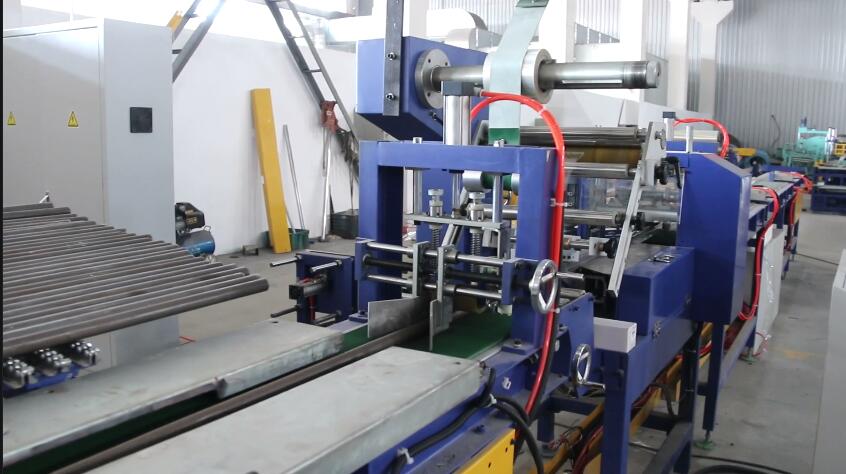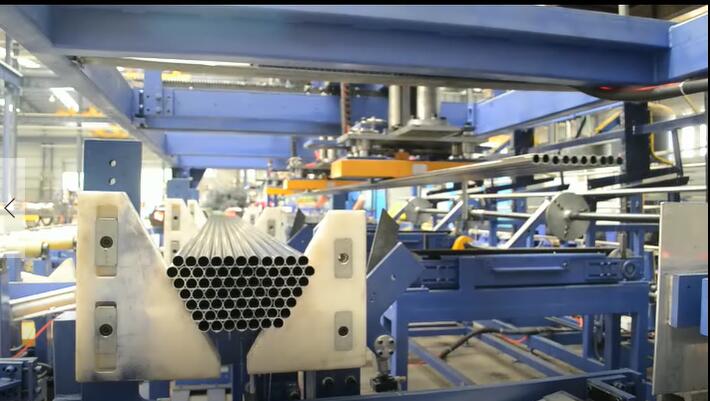Understanding Automatic Steel Tube Bagging Machines: Operation, Benefits, and Key Features
Automated packaging solutions play a crucial role in modern manufacturing and fabrication environments. For operations handling steel tubes, automatic bagging machines offer significant advantages over manual methods, improving efficiency, consistency, and safety. This guide explores the function, benefits, and key considerations of these systems.
These bagging machines often conform to CE guidelines and are designed using current technology and criteria suitable for industrial applications involving steel tubes and similar profiles. Developing innovative and cost-efficient equipment is key to resolving common packaging issues like loose or irregular bundles in industries handling materials like aluminum and steel. The bag packing solution involves integrating various stages into a seamless process.
An automatic steel tube packing machine is specifically engineered for the feeding and bagging of steel tubes. A typical system includes stages for tube feeding, positioning, bagging, sealing, and out-feeding. It represents an efficient, convenient, and safer packaging method compared to manual alternatives.
1. Purpose and Benefits of Automating Steel Tube Bagging
Automating the bagging process for steel tubes addresses several challenges associated with manual packing and provides tangible operational benefits:
- Resolves Manual Bagging Issues: Overcomes problems like inconsistent package quality, potential product damage during handling, and the high labor costs associated with manual bagging.
- Increases Throughput: Automated systems operate at higher, more consistent speeds than manual labor, significantly boosting packaging output.
- Reduces Material Waste: Precise control over bag dispensing and sealing minimizes waste of packaging materials.
- Lowers Labor Costs: Reduces the need for manual intervention in the bagging process, freeing up personnel for other tasks.
- Enhances Product Protection: Creates secure, uniform packages that better protect tubes during storage and transit, minimizing damage.
- Improves Worker Safety: Reduces manual handling of potentially heavy or awkward tubes, lowering the risk of workplace injuries.
2. How Automatic Steel Tube Bagging Machines Work: Key Components and Process Flow

Understanding the operational sequence and core components provides insight into how these machines achieve efficiency:
2.1. Steel Tube Feeding System
Loads individual tubes or pre-arranged bundles onto the infeed conveyor, ensuring a consistent supply to the bagging station.
2.2. Conveyor System
Transports the steel tubes smoothly and accurately from the feeding area into the main bagging section of the machine.
2.3. Bag Dispensing and Opening
- Bag Dispenser: Holds a supply of pre-made bags (often on a roll or stacked) and feeds them individually as needed.
- Bag Opener: Utilizes mechanisms (e.g., vacuum suction cups, mechanical grippers) to spread the bag open, preparing it to receive the tube(s).
2.4. Tube Insertion
Positions the steel tube(s) correctly and pushes them gently but firmly into the opened bag.
2.5. Bag Sealing Station
Closes the open end of the bag securely around the inserted tubes. Common sealing methods include:
- Tie wires
- Clips
- Heat sealing (for compatible bag materials)
2.6. Outfeed Conveyor
Transports the fully bagged and sealed steel tubes away from the machine, often towards accumulation, palletizing, or shipping areas.
The entire process is typically synchronized and managed by a Programmable Logic Controller (PLC), ensuring all components work together seamlessly and at the optimal speed.
3. Key Features and Capabilities to Consider
When evaluating automatic steel tube bagging machines, several features and capabilities are important:
- Operational Parameters:
- Tube Size Compatibility: Handles a defined range of steel tube diameters and lengths (e.g., common ranges might be 1-8 inches diameter, but specific machine capabilities vary).
- Packaging Speed: Rated output, often measured in tubes or bundles per minute (e.g., up to 60 tubes/minute, depending on tube size and configuration).
- Adjustability: Ease and speed of adjustment for different bag and tube sizes, often managed via the PLC interface (HMI).
- Automation and Control:
- Automatic Tube Feeding: Ensures continuous operation without manual loading for each cycle.
- Integrated Bagging Cycle: Fully automated sequence of bag opening, tube insertion, and sealing.
- PLC Control System: Provides precise synchronization, speed control, and diagnostic capabilities.
- Safety:
- Safety Guarding: Physical barriers and enclosures around moving parts to protect operators.
- Emergency Stops & Interlocks: Safety circuits that halt machine operation if guards are opened or an emergency stop is activated.
- Output Quality:
- Produces securely sealed and neatly packed tubes.
- Minimizes potential for damage during subsequent handling and transport.
4. Integration and Implementation

Successfully implementing an automatic steel tube packing machine involves considering its place within the broader production workflow. Factors include line layout, space requirements, utility needs (power, compressed air), and potential integration with upstream processes (like bundling or cutting) and downstream systems (like palletizing or labeling). Proper operator training and establishing a routine maintenance schedule are also vital for long-term performance and reliability.
In summary, automatic steel tube bagging machines offer a robust solution for efficiently and safely packaging steel tubes. By automating feeding, bagging, and sealing, these systems deliver higher throughput, reduced waste, lower labor costs, and improved package integrity compared to traditional manual methods. Evaluating the specific features, capabilities, and integration requirements is key to selecting the right system for a given application.